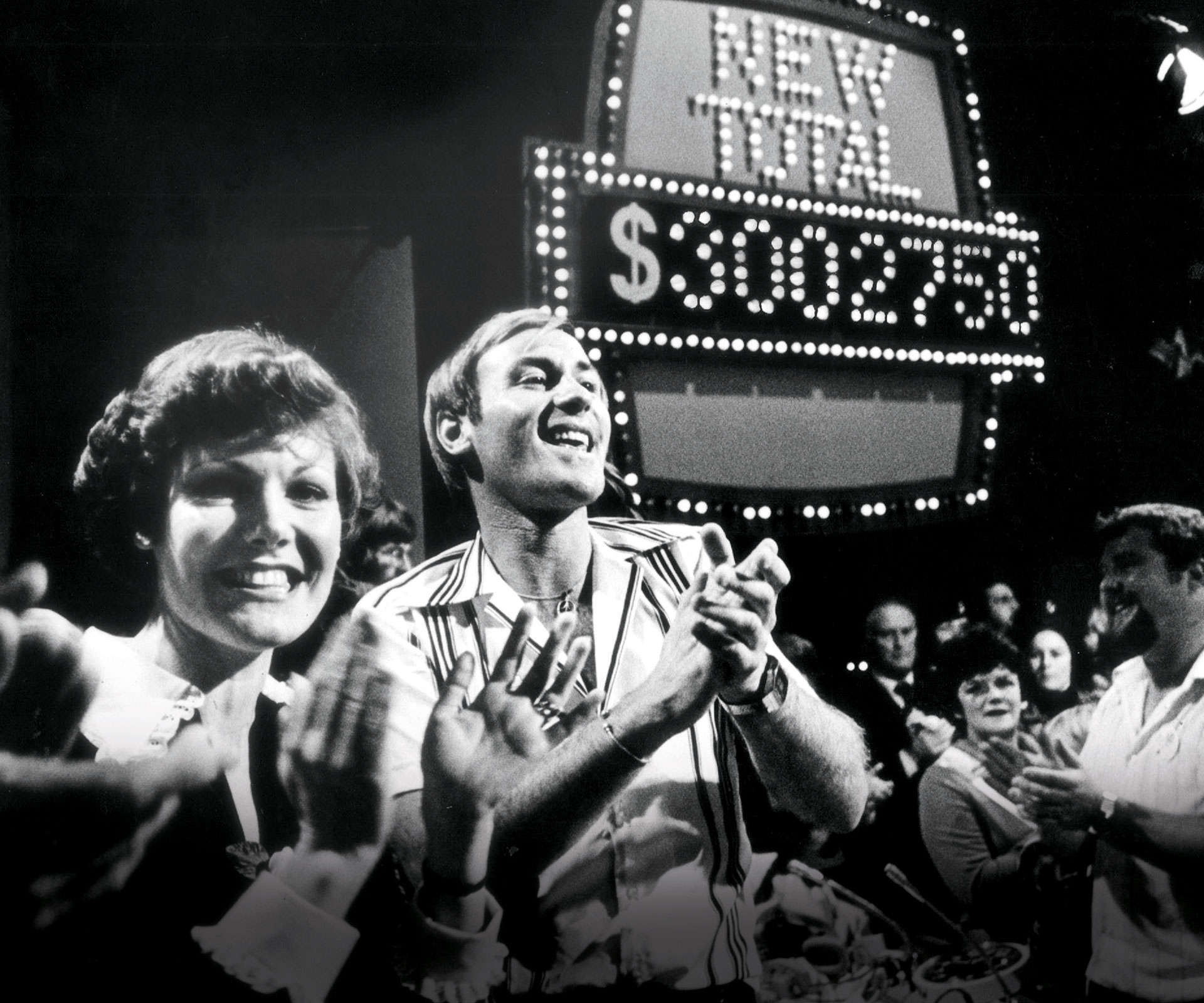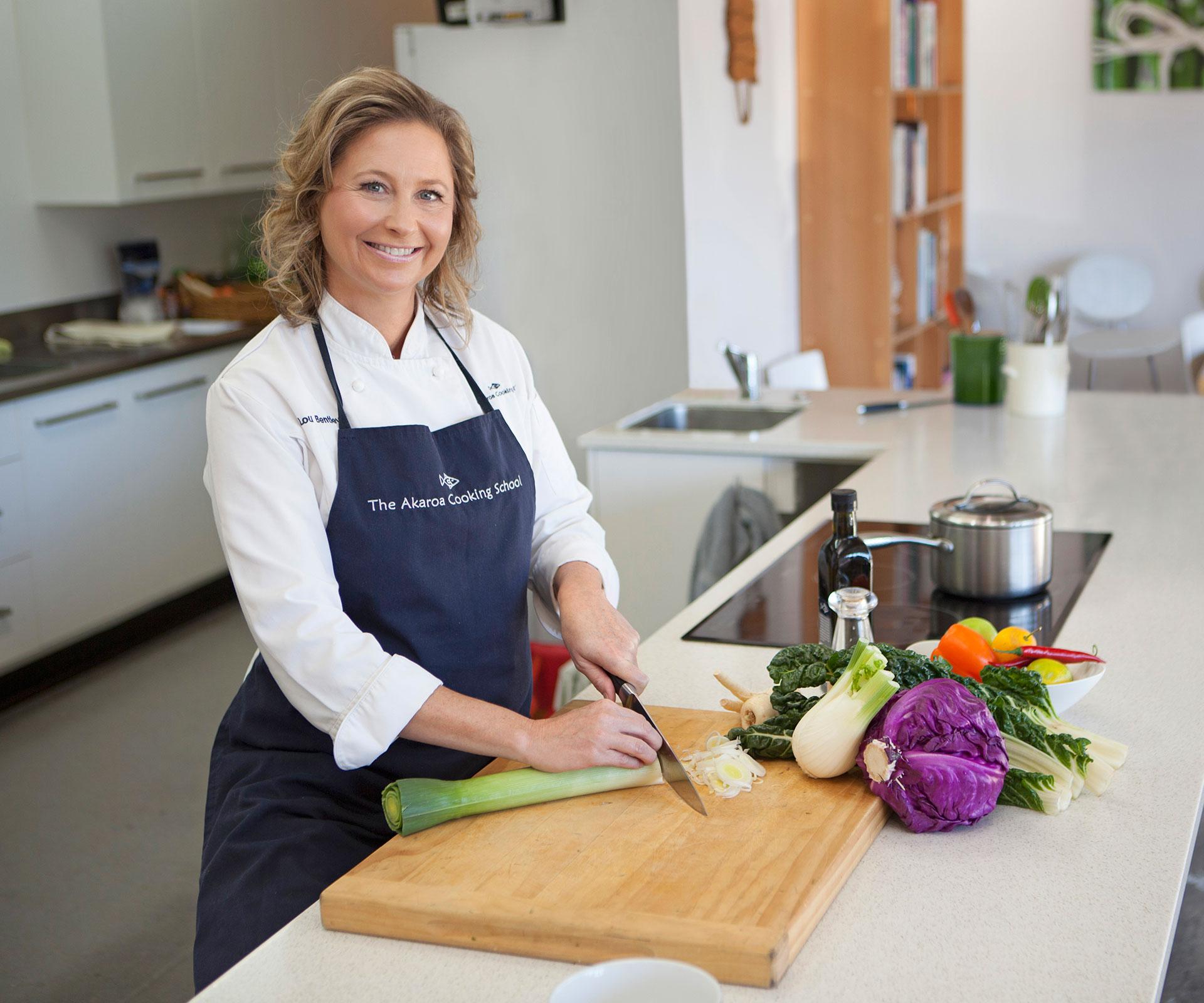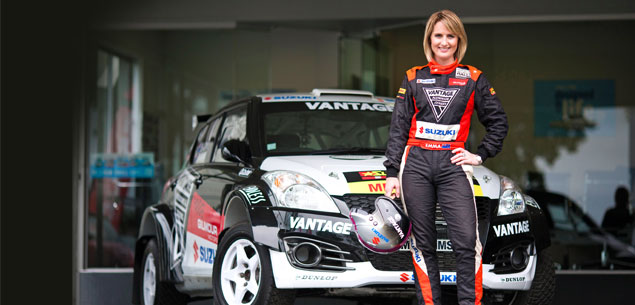When the first telethon burst onto our screens in July 1975, TV2 was one week old, colour television was new, the state controlled the airwaves and broadcasting was switched off during the night.
The fundraising party that beamed live from television screens for 24 hours was like nothing Kiwis had seen before. Newsreaders, politicians, sports stars and actors flooded the country’s four main studios and encouraged New Zealanders to donate to a cause in a live, continuous broadcast that personalised the previously untouchable faces of television.
Media commentator Aline Sandilands was a radio presenter when the first telethon launched 40 years ago.
“I remember when [producer] Don Hutchings, known as Mr Telethon, came and persuaded us that it could happen,” she recalls.
“I don’t think any of us knew how wonderful and energising it was going to be.”
The event was an ideal launch pad for TV2, which was to be fun, local, and interactive in contrast to TV One, the serious BBC replica which had dominated Kiwi television for 20 years.
“Telethon was a real change. The people you saw on the box every night, reading the news seriously, suddenly had a human face – they became normal,” says Aline. “In those days we didn’t have such a thing as ‘celebrities’ – that came later. TV presenters didn’t appear on the covers of women’s magazines until the late 1980s.”
TVNZ executive Andrew Shaw began work as a TV2 presenter just weeks before the first telethon. He says the structure of broadcasting during the 1970s and 80s created the perfect environment for the fundraiser.
“You were talking about a two-channel market space, where free-to-air television was a very significant part of people’s entertainment options, so telethons were able to focus people on one big event. It was a massive celebration; the country came to a standstill on those weekends.
In terms of a total reach of people there has never been anything that has come anywhere close.”
The 58-year-old, who worked as a presenter and producer on telethons over 15 years, says although telethon was modelled on the American original, the result was uniquely Kiwi.
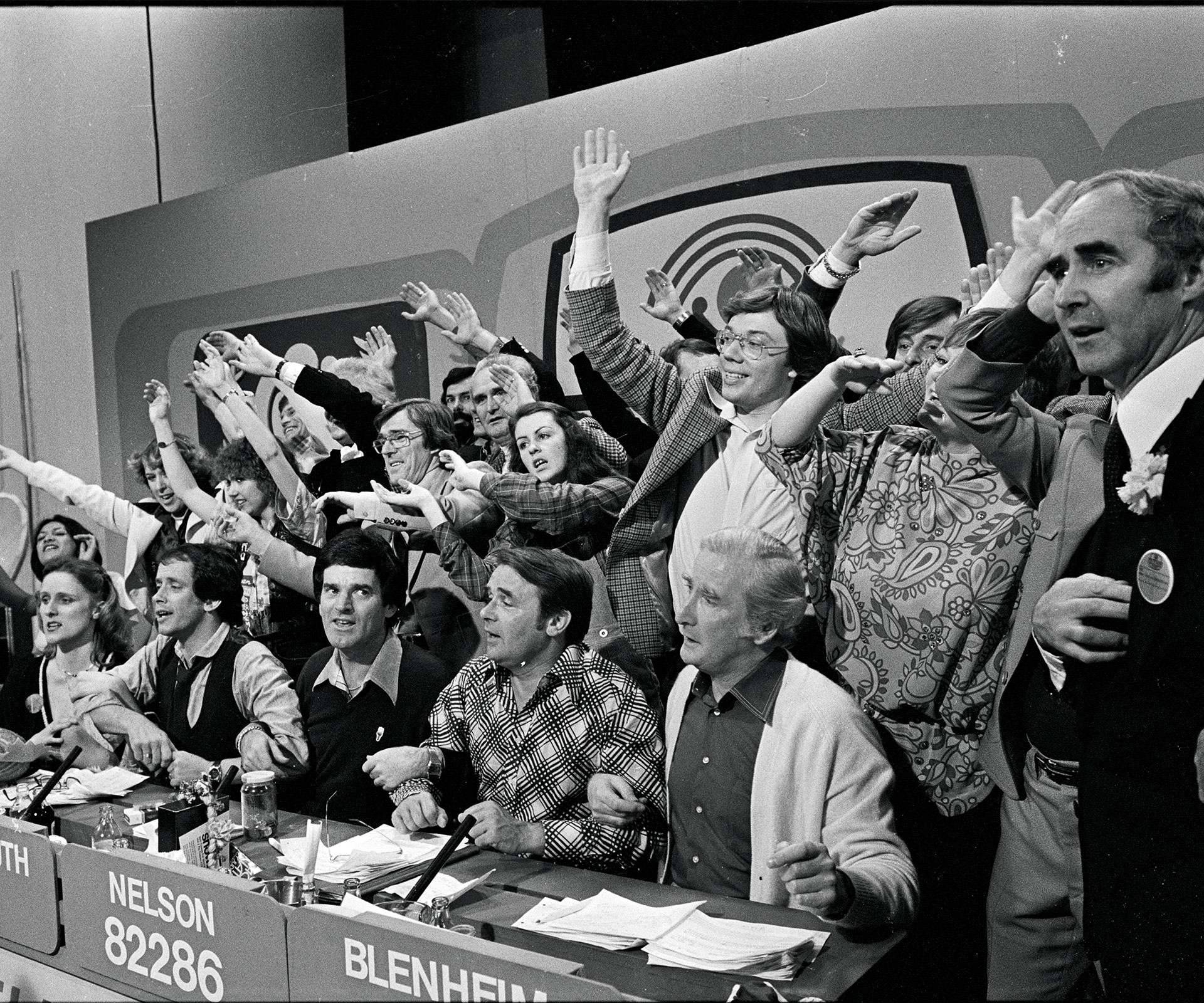
Singer Ray Columbus (seated far left), newsreader Philip Sherry (seated far right) and presenter Bob Parker.
“The telethons in other countries were much shorter in duration. Here the small child with a recorder from Gore could get as much airtime as a major act from Auckland – that entertainment democracy is what gave it its charm.
“Schools and clubs got involved in the build-up months beforehand. It was this strange, crazy, wild, wonderful circus. God knows how many press-ups I had to do on national television.”
Aline likens it to an early New Zealand’s Got Talent. “Anyone who had any talent could come on and strut their stuff on telethon. It was very like reality TV but with a lot of the celebrities you loved as well as ‘us’.”
Because of TV2’s early limitations, the first telethon was filmed in the four main centres but broadcast to just Auckland and Christchurch. However, as it grew it was filmed in regions across the country and linked to create a nationwide event. In a time before computers, its preparation took months.
“As a producer I had to time it out manually,” recalls Andrew. “You’d be sitting down with sheets of paper creating a skeleton plan for 24 hours of live television and that process would take six weeks to write. Then you’d have to change it by getting the rubber out.”
He says the live show was helped by the high quality of live broadcasters during that era. “We had great broadcasters, on and behind camera, who could deal with changes and keep it going.”
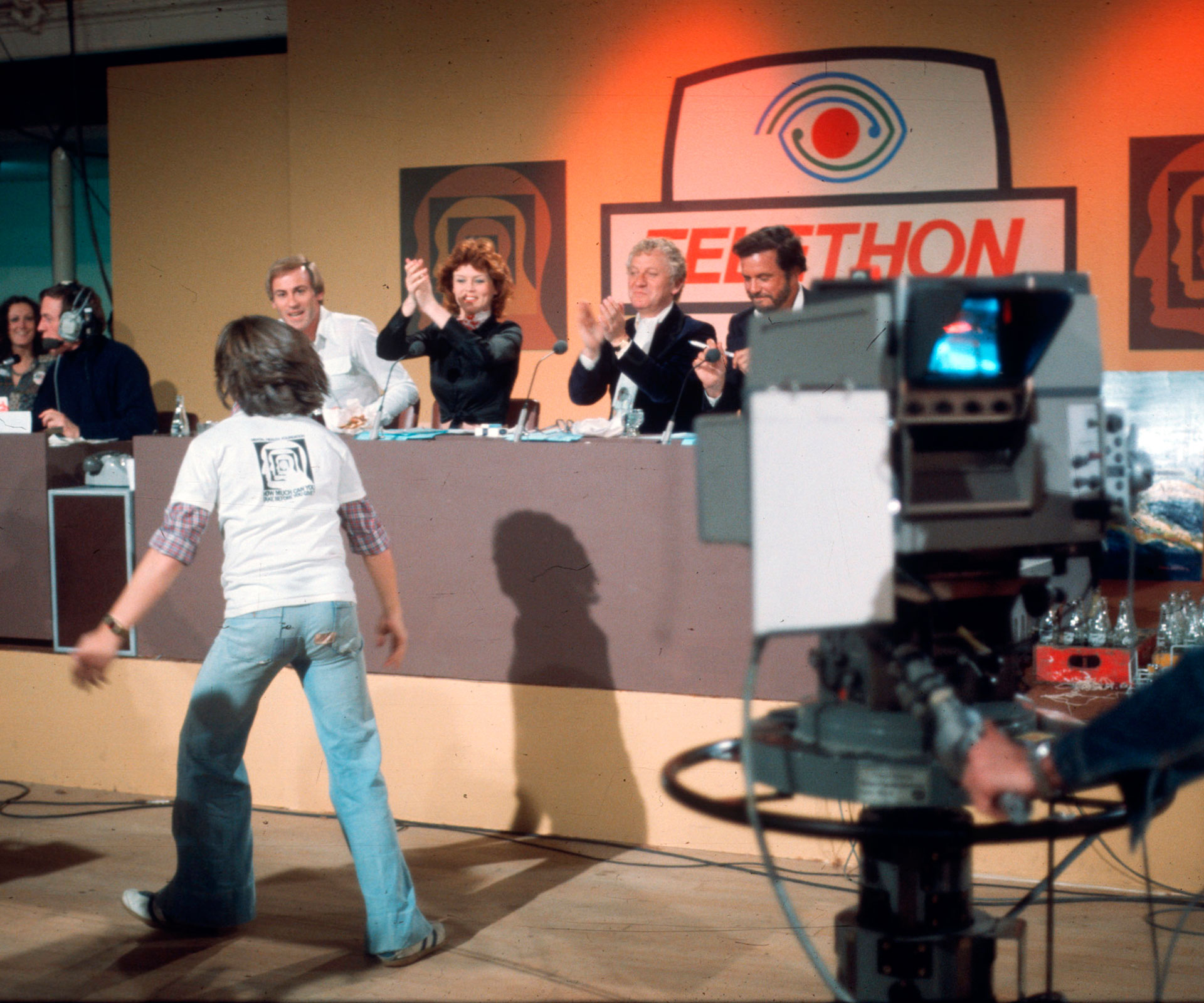
In the studio, 1979.
One of those was Bob Parker, 62, the presenter of shows including This is Your Life. “I did a lot of live broadcasts in those days because a great amount of television was shot live, even some dramas,” he says. “I loved it. In my mind it was the best way to do TV because you got an additional energy.”
The former Christchurch mayor, who presented his first telethon in 1981, remembers the joy of interacting with live audiences in the “no holds barred” fundraisers. “You’d come in at four in the morning and there would still be a huge audience in the television studios.
“One night we had the ‘ladies of the night’ turn up in the Avalon studios. We were a little bit concerned about what the activity to raise funds was going to be! But they just handed over some cash to the collectors. It was amazing to think that people from all walks of life, all over New Zealand were coming together to help.”
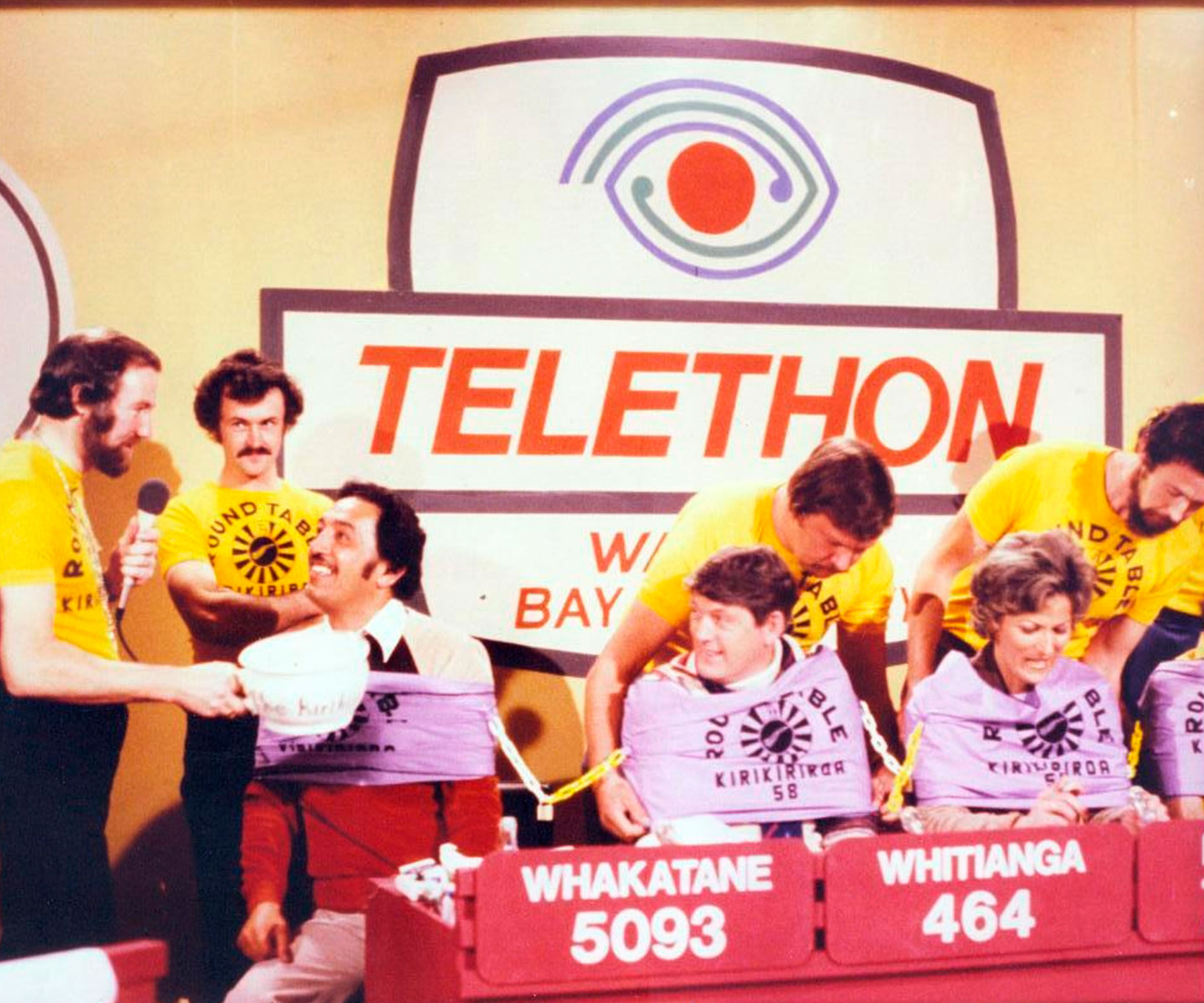
Telethons were part of the great no-holds-barred approach to live television.
That, says Andrew, was the highlight of the event. “Grossly disparate New Zealanders representing everything from the Salvation Army to race-based gangs would turn up in a studio with money in their pockets, having done something amusing, genuine or crazy, and hand it over. You might be working with the Lions Club one minute and the Hells Angels the next.”
Plus there were the overseas stars who participated in each telethon – including Entertainment Tonight’s Leeza Gibbons and Coronation Street’s Christopher Quinten, who famously got together after the 1988 telethon in New Zealand.
“Over time, tremendous people came to take part,” says Andrew. “They were always a joy to work with because most of them could not believe what they had got themselves into. I remember having a conversation with actress Lauren Bacall, who came here for one, and she was like, ‘What is going on here?!’”
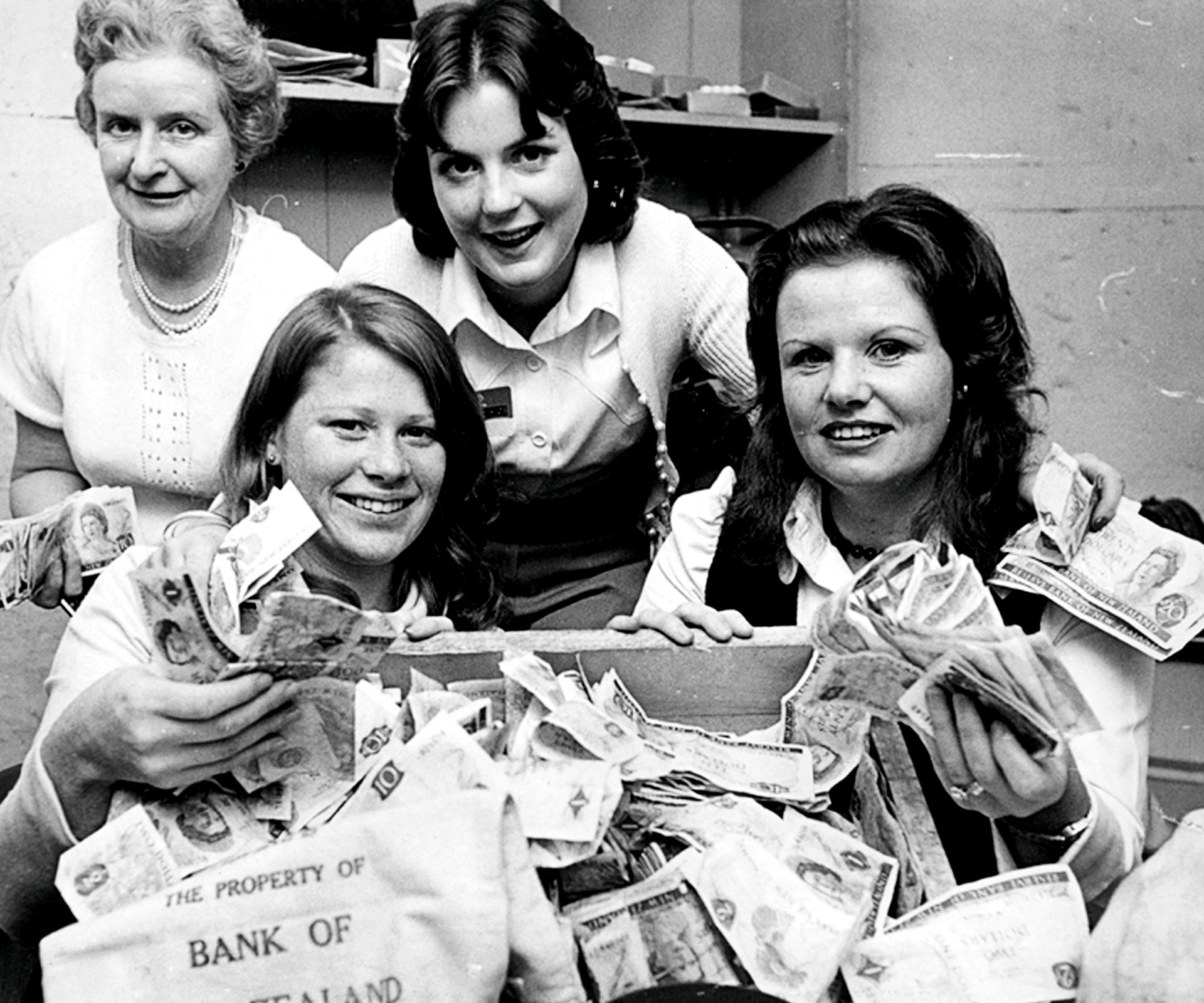
1975 telethon cash counters.
What was going on was a terrific amount of silliness and good fun, says Aline. “We all went crazy with feeling good. We would leap around singing ‘thank you very much for your kind donation’. If you say that to anybody over 30 they know what you’re referencing,” she continues, recalling the catchy ditty that was telethon’s response when donations were made.
But all good things must come to an end and in 1991 TVNZ ran its last telethon, followed by a nationwide telethon in 1993 held by TV3.
“Television had become more commercial and telethons very expensive to do, so they became a significant burden on TVNZ,” says Andrew.
There have, however, been two more telethons in recent years – TV3’s The Big Night In which aired in 2009 and Maori TV’s telethon for Christchurch in 2011. Both failed to replicate the glory of their predecessors in the 1970s and 1980s, which reached a fundraising peak of $6 million in 1988.
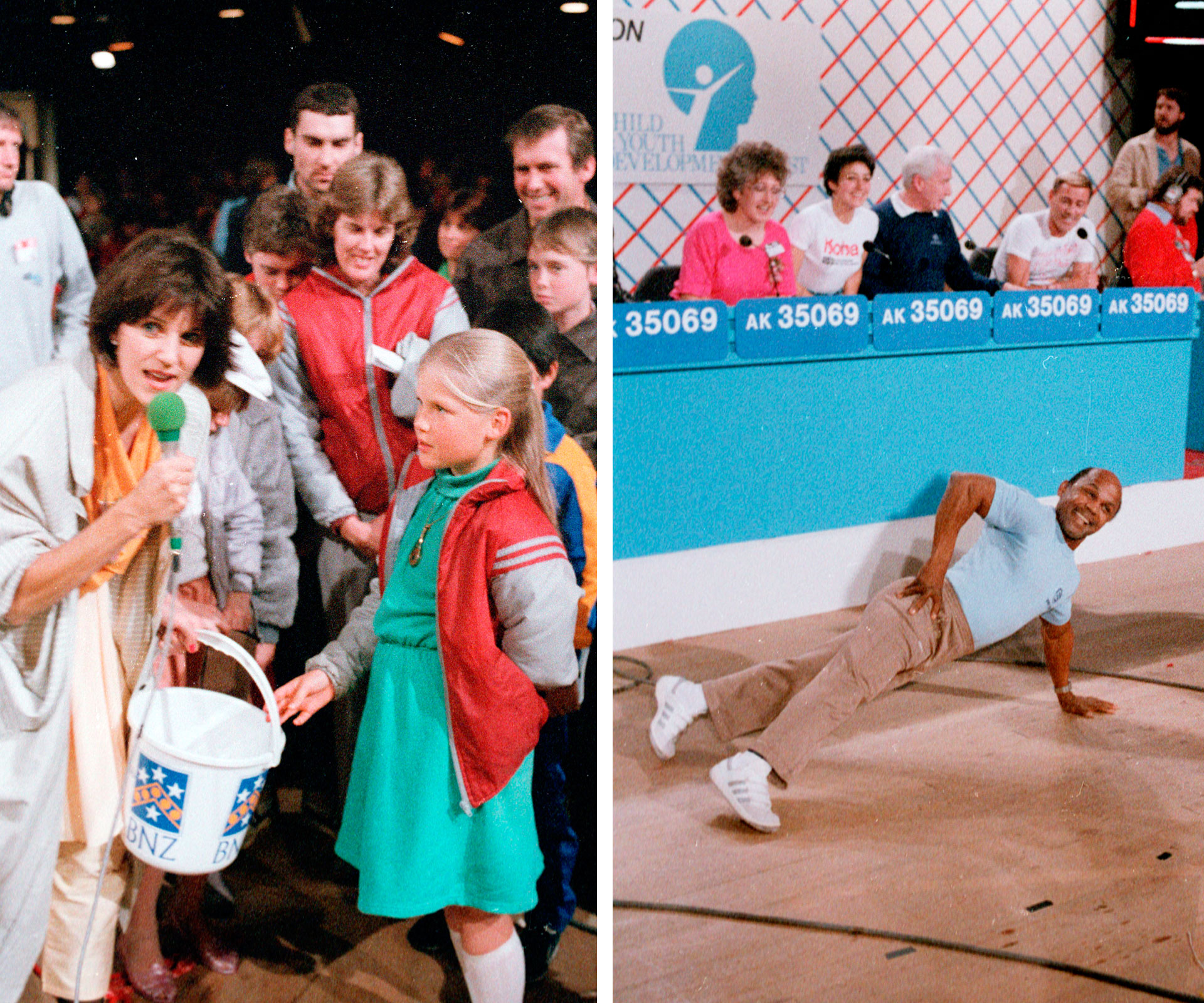
Security wasn’t the issue it is today, so anyone with money to donate was allowed into the studio to mix with the local and international stars taking part in the show.
Aline explains that the privatisation of broadcasting and an increasingly competitive environment means television companies will no longer risk giving up valuable airtime for a televised event.
She also points out that with video content now available on so many different channels and platforms, it is increasingly difficult to focus audiences on one televised event. “The idea of the ‘core audience’ watching is almost defunct now, unless it is to watch a rugby or cricket world cup final. [Television companies] wouldn’t know how to latch on to that audience any more and they wouldn’t be able to afford it.”
And with thousands of charities asking for money, donor fatigue has set in. “We are not as generous as we used to be and we are a lot more cynical about where the money goes because we have heard so many terrible stories,” says Aline.
“When Telethon started in 1975 New Zealand was much more trusting and innocent – TV studios were flung open to the public, we had no fear of terrorism, we didn’t think our celebrities needed protection, and we didn’t worry about how the money was going to be spent. Everybody seemed honourable and very safe and we could let our crazy go out very safely.”
And they did. “It was like being part of the best party ever,” recalls Aline with a smile. “It was the whole nation pulling together, an orgy of giddy self-congratulations and a feeling of community and wellbeing.”
Words: Nicola Russell
Photos: Alexander Turnbull Library, News Pix, TVNZ
